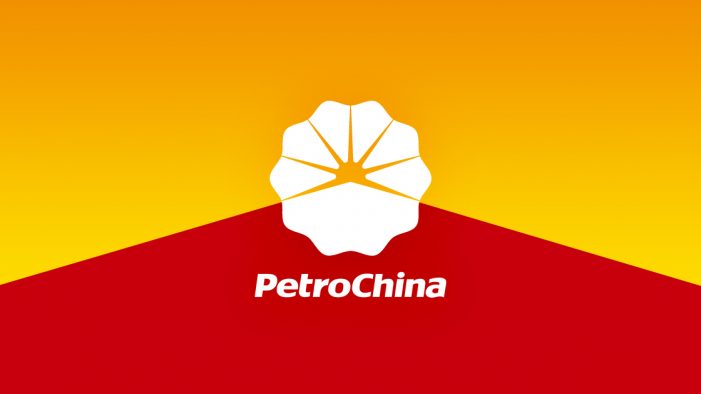Singapore — China’s state-run oil giant PetroChina has been forced to reconfigure a long-delayed refinery project that was designed to process Venezuelan crude, as the deteriorating situation of the South American country’s oil sector has put future supplies at risk.

The move underscores China’s attempt to salvage the large 20 million mt/year (400,000 b/d) greenfield refinery project in southern China in which both PetroChina and PDVSA had planned to invest, and which made no progress for nearly five years.
It also highlights China’s failing downstream projects that were planned with PDVSA, jeopardizing over $50 billion of Beijing’s loans, much of which was pumped into Venezuela’s oil industry.
China was promised oil supply as repayment for the loans but even this may not materialize as the indebted PDVSA stops making payments for everything from workers’ salaries to electricity supply, and loses the ability to raise finances.
The failed projects include at least two more greenfield refineries — the 200,000 b/d Weihai refinery in eastern Shandong province, which included storage and petrochemical facilities and was planned to start operations in 2016 and the 200,000 b/d Shanghai refinery that was supposed to start in 2019. Both are in limbo.
Earlier this year, China’s independent refineries, which were the main end-users for Venezuela’s Merey 16 grade of crude oil in China, had to seek substitutes.
Both China and India are exposed to Venezuela, importing 250,000 b/d and 325,000 b/d respectively, indicating that the world’s second and third biggest oil consumers could face major challenges in sourcing alternative compatible barrels, the International Energy Agency said in its latest July report.
GUANGDONG REFINERY REVIVAL
Only one of the two 200,000 b/d crude distillation units at the proposed Guangdong Petrochemical refinery in southern China will process Merey 16 crude, while the other will be designed to process Middle Eastern crude, according to the latest environmental assessment from PetroChina dated July 10.
Guangdong Petrochemical, also known as Nanhai Petrochemical, is a 400,000 b/d refining project to be built by a 60:40 joint venture between PetroChina’s parent CNPC and PDVSA, called PetroChina-PDVSA Guangdong Petrochemical Co Ltd.
The latest retooling is aimed at more feedstock feasibility to diversify from Venezuela, and increase output of high value petrochemical products while cutting low-margin refined products, PetroChina Guangdong said in the assessment report.
Analysts from Beijing and Singapore do not expect the project to be ready by 2023, or even by 2025.
When the Guangdong refinery project was initially proposed in 2011, it was designed to process only Venezuelan Merey 16 crude or diluted crude oil, or DCO. Merey 16 is a blend of extra-heavy crude from the Carabobo block in the Orinoco Basin and the lighter Mesa-30 grade while DCOs are blend Venezuelan crude without specified sources. Carabobo is jointly operated by CNPC and PDVSA under the Sinovensa venture.
In April 2012, the refinery was approved by the National Development and Reform Commission for start-up by 2014-2015, but construction was suspended as PDVSA could not confirm crude supplies, according to last week’s report.
In mid-2017, after nearly five years of radio silence, the two companies signed a flurry of agreements in an attempt to revive the project. In early March 2018, PetroChina published the first environmental assessment report saying the Guangdong refinery will process Basrah heavy crude from Iraq, and heavy crude from Iran, in addition to Merey 16.
VENEZUELA’S UNRAVELING OIL SECTOR
China imported 382,871 b/d of Venezuelan crude in the first quarter, down 10% year on year, latest detailed customs data showed.
At the same time, Venezuela’s June production fell 60,000 b/d to 1.30 million b/d, the lowest in the history of the Platts OPEC survey, except for December 2002 and January 2003, when an industry strike severely curtailed production.
Venezuela’s production is expected to continue falling for rest of the year as its economy suffers from crushing debt, hyperinflation, labor troubles and crumbling oil infrastructure, which is unlikely to recover in the short term.
The faster-than-expected decline could see production capacity dropping below 1 million b/d by the end of this year, implying an annual drop of 730,000 b/d in 2018, the IEA said in its latest report.
Despite this, China Development Bank has committed to invest more than $250 million to ramp up output, according to Venezuelan economy and finance minister Simon Zerpa, the IEA said, adding that China has loaned Venezuela more than $50 billion in the past decade and had decided against offering new loans last year.
“It remains to be seen if this will make any difference in view of the overall dysfunction in the Venezuelan economy,” the IEA said.
— Oceana Zhou, [email protected]
— Eric Yep, [email protected]
— Edited by Irene Tang, [email protected]
Source: S&P Global Platts



























